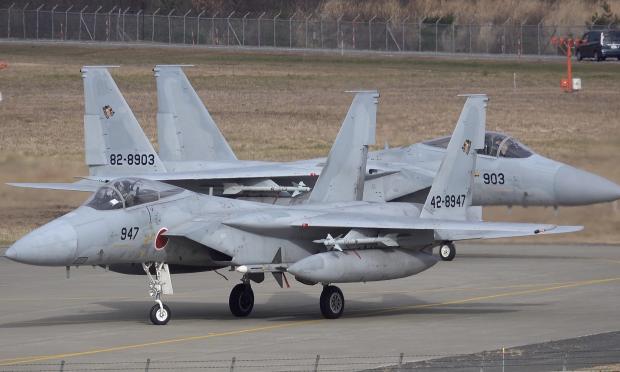The Hellenic Air Force with the addition of the French Rafale 4+ fighters and the ongoing upgrade of 83 F-16 fighters to the VIPER version, is a fact that will have the qualitative superiority over Turkey in the Aegean and SE Mediterranean for years to come, which will be augmented by the arrival of the American F-35 starting in 2028.
The attempt to upgrade the Turkish air force
Erdogan, realizing the above, is currently negotiating the acceptance of Sweden's entry into NATO, with the acquisition from the US of 40 F-16 BLOCK-70 and 79 upgrade kits for the same number of F-16 fighters that the Turkish Air Force has in its fleet .
At the same time, it is carrying out a domestic modernization of the existing F-16 BLOCK-30, with the UZGUR program, with the prospect of including the F-16 BLOCK 50 in it, although this upgrade, despite the Turkish charms, is clearly subordinate to the one that accept Greek fighters from the USA in VIPER version.
Finally, it manufactures the TB-3 drone for TCG ANADOLU, the KIZINLEMA unmanned aircraft and the 5th generation TF-X National Aircraft (KAAN).
Proposal to install F-15 fighter engines in Greek F-16s
In addition to the above, our country could further upgrade its F-16 fighters by "wearing" F-15 fighter engines, supplying them either from the USA or from other allied countries, such as Israel for example, after relevant license from the US, following Japan's example with Indonesia.
The example of Japan-Indonesia
Specifically, according to an International Media article, Japan is reportedly considering exporting used F-15 fighter jet engines to Indonesia to install them on Jakarta's F-16 fighter jets.
According to a report in The Yomiuri Shimbun, Indonesia had requested the export of these engines from Japan, and the two countries have already signed an agreement on the transfer of defense equipment and technology, thus laying the groundwork for this future transfer.
Japan is evaluating the possibility of installing used Pratt & Whitney F100 turbofan engines, derived from F-15 aircraft, in Indonesia's F-16 fighter jets.
This reported decision is due to the remarkable similarities between the F-15 and F-16 aircraft engines, providing Tokyo with the means to address Jakarta's specific request.
Due to the challenges associated with the modernization of the Air Self-Defense Force (ASDF) F-15s, approximately 100 of these aircraft are expected to be phased out.
Jakarta is currently in the process of modernizing its Air Force, which includes the procurement of Rafale fighter jets from France, while ensuring the operational functionality and maintenance of its existing fleet of American-made F-16 Fighting Falcons and Russian Sukhoi Su- 27/30 Flanker fighters.
In addition, the country recently finalized an agreement to procure a fleet of 12 Dassault Mirage 2000 fighter jets from the Qatar Air Force.
However, the operational parameters of Japan's Three Principles for the Transfer of Defense Equipment and Technology limit the transfer of defense equipment from abroad to "rescue, transport, vigilance-surveillance or mine-laying means".
Parties are currently not covered in the scope of the guidelines.
However, their export is permitted in international co-development situations, particularly if components were previously exported to the United States.
The government is expected to introduce the proposed policy during an upcoming meeting of the Liberal Democratic Party (LDP) and its coalition partner Komeito.
Under the LDP, some members have expressed the view that the guidelines should be revised to facilitate the active export of spare parts and other equipment.
With China in mind, the government's aim is to prevent any change to the status quo in the Indo-Pacific through force.
It is believed that by considering exporting these engines to Indonesia, Japan aims to create a favorable safety environment.
A valuable reusable engine
The future of approximately 200 engines, which will be removed from the F-15 fighter jets after their retirement, remains uncertain, as these engines retain their serviceability and have significant potential for further application.
Due to their expected operational viability, they have garnered significant attention on the international stage, with at least sixteen countries showing strong interest in acquiring these engines.
On May 9, Hiroshi Ide, President of IHI Corporation, informed reporters that approximately 200 Pratt & Whitney F100 turbofan engines installed on Mitsubishi F-15J fighter jets will have to be discarded once the aircraft are retired.
Ide revealed that his company has been involved in discussions with the ruling party about scrapping the engines from these fighter jets.
Exporting the engines to another country has been considered as a possible solution.
According to Japan's "Medium-Term Defense Plan", formulated at the end of 2022, there is a clear emphasis on accelerating the replacement of older fighter aircraft unsuitable for refurbishment. The plan involves replacing these obsolete aircraft with the latest version of equipment available.
To align with this strategy, the nation plans to replace about half of the Air Self-Defense Force's (ASDF) 200 F-15s with F-35s within the next decade.
The plan outlines a phase-out of the F-15s at a rate of about ten aircraft per year.
Since the F-15 is a twin-engine fighter, this would make about 20 engines available each year for potential export or reuse.
Used F-15 Pratt & Whitney F100 turbofan engines have potential for reuse by other countries' air forces using F-15 and F-16 fighter jets.
Expected stakeholders include Taiwan, South Korea, Indonesia, Saudi Arabia and several European countries.
Transferring these machines to like-minded countries considered vital to Japan's security would facilitate cooperative relations and strengthen bilateral defense ties.
IHI Corporation manufactures the Pratt & Whitney F100 turbofan engine under license. In case of transfer to foreign countries, the maintenance and service of these engines will be entrusted to the Japanese companies.
This arrangement will bring significant benefits to domestic companies, as they will have the opportunity to participate in ongoing maintenance activities, promoting the development and expertise of the Japanese aerospace industry.



